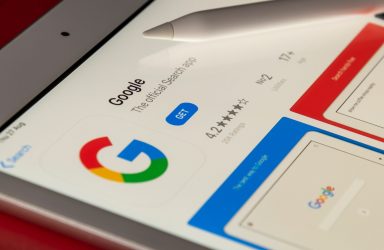Estimated Reading Time [est_time]
We took to Twitter to ask anybody who would listen, whether the use of emojis in social media ads improves click-through-rate (CTR). 38% of our poll voters said that they’d never tested it.
Have you found that the use of Emojis in social ads improves CTR? ????????
— Digital Clarity (@DigitalClarity) February 6, 2020
This got us thinking: does A/B testing play an essential role in your digital marketing strategy? So we asked the people of Twitter again.
We were surprised that 35% of people determined A/B testing as not important. But we were shocked when the majority of respondents voted that they’d never thought to try split testing.
37% of our poll voters said they’d never A/B tested whether Emojis improve CTR???? Does A/B testing play an essential role in your digital marketing strategy? #DigitalMarketing #marketingstrategy
— Digital Clarity (@DigitalClarity) February 13, 2020
If you’ve never thought to try A/B testing in your social media campaigns, or you’re simply not sure what to split test, here are
5 things you should be A/B testing:
- Ad Creatives
- Landing Pages
- Audience Targeting
- Bid Strategies
- Campaign Formats
Ad Creatives
Although you might have a good idea of what your target audience will be receptive to, you shouldn’t take the risk of running one ad creative and one version of ad copy to go with it. For want of a better saying, this would be putting all your eggs in one basket.
Before most television adverts air, they will go through rigorous testing processes, including feedback groups, online panels, and even neural testing to determine subconscious reactions. Traditional advertising has to implement these testing processes before launching campaigns because they can’t necessarily track or test how adverts are being received or responded to in real-time.
Online advertising, however, allows you to analyse which adverts are performing best and which adverts aren’t in real-time. From this, you can determine which ad creative drives results, rather than guessing or presuming which one will captivate and persuade your target audience.
Testing the performance of ads in real-time allows you to adapt quickly to what your target audience likes, and will provide them with diverse content so as not to bore them with the same ad over and over again.
A/B testing different call-to-actions, varying colours or contrasting designs will all provide you with valuable insight into what your audience is most responsive to. Ad sequencing should also be considered when testing which messages your audience responds to at which stage in their buying journey.
Landing Pages
Once you’ve perfected your A/B testing process for your ad creatives, you may find that you can get people through the door to your website but you’re not getting the results you want once they’re there. If you’re finding great engagement with your ads, but low conversion rates, it may be worth evaluating what factors on your landing page might be (or not be) influencing buying decisions.
A/B testing landing pages is a great way to optimise for conversions and discover exactly what it is about your landing page that will drive users to convert. Rather than having endless discussions with your team about what you think will work to captivate your audience, inform your decisions with the data of what works for your audience. Although your opinions and ‘gut instincts’ are valid and helpful when shaping landing pages, it will benefit you in the long term to get the cold hard facts of what works and what doesn’t.
There is an endless list of elements that you could test, but to name a few you could split test your landing pages with different call-to-actions, copy, layout, imagery, or lead generation forms.
Audience Targeting
Whether you’ve been using paid social campaigns to reach your target audience for years or you’re only just starting out, A/B testing audience targeting methods are essential to continually confirm you’re reaching the right people. There are infinite combinations of targeting options across various social media platforms. Firstly, how do you know which options and combinations of options will be best to target your perfect customer? After launch, how do you know whether you’ve nailed it, or whether there’s a better option out there?
Split testing will allow you to evaluate which targeting options, and combinations of these targeting options, are working best to reach your target audience. For example, do you get the best results when targeting by interests or behaviours, or a combination of both? Are you reaching your audience when you target those with an interest in travelling abroad or when you target those with an interest in travelling abroad and an interest in outdoor activities?
Audience targeting capabilities from social media platforms are constantly evolving and improving. If you’re at first apprehensive to try a new targeting method, implementing it initially as part of a split test is a great way to determine whether it could be worth rolling out on a larger scale. This will give you an idea of how it performs in comparison to other methods rather than looking at its performance in isolation.
For more information on paid social targeting options check out my tutorial on How to Reach my Target Audience with Social Media.
Bid Strategies
At the moment paid media platforms are pushing hard for marketers to implement automated bidding strategies. However, these automated bidding strategies won’t be right for everyone. Although they may be thought of as ‘easy’ or ‘management free’, they require a certain level of commitment and expertise to determine which bidding strategy will be right for your campaign and whether they’re doing a better job than your manual labour.
This is where split testing comes in. Eradicate doubt and find out for certain whether an automated bid strategy is going to work for your campaign. Start by A/B testing a campaign using manual bids against an identical campaign using an automated bidding strategy. Or, compare a manual bid campaign against several campaigns with different bid strategies. This will allow you to unlock the perfect bidding strategy for you, thus benefiting you in the long run.
Campaign Formats
When creating paid social campaigns most platforms will require you to set your campaign goal which will often determine the campaign format. For example, on LinkedIn and Facebook, a campaign goal of lead generation will mean that your campaign will use lead generation forms within those platforms for data capture. On the other hand, your campaign goal may be lead generation but you want people to fill out the data capture form on your website. In this case, your campaign goal would have to be ‘website traffic’ to be able to take users through to your website.
But how do you know whether a lead generation form within the social media platform or a lead generation form on your website, will encourage more conversions? All together now… split test it!
If you only ever choose one type of campaign goal or campaign format for your paid social campaigns, it may be time to branch out and see if another option could be more beneficial. Social media platforms have a lot to offer and are constantly evolving their paid media product offerings. Facebook’s Instant Experience is a good example of this.
The best way to find out if a new feature, or simply a feature you haven’t tried before, could work for you is to simply test it. More specifically, A/B test it. That way you will be able to see how it performs against your original campaign format.
Best Practices
Let me take you back for a moment to your secondary school science classroom, where you would have been told time and time again that to make something a fair test, you should only change one variable at a time. This age-old principle applies also to the world of marketing.
Only change one thing in your split test, and keep everything else the same. For example, if you were looking to test one audience against another, keep your ad creatives, bids, campaign formats, and goals the same. This will allow you to confidently attribute any differences in performance down to the audience.
When A/B testing ad creatives, it is best practice to set your ads to rotate evenly rather than letting the social media platform optimise for performance. Most social media platforms will offer ‘optimise for performance’ as default, so you will have to manually change this setting. Rotating ads evenly will allow you to establish that all differences in results are due to your test, rather than the social media algorithm favouring a certain ad over another.
It’s important to note, however, rotating ads evenly requires a much closer eye on campaigns and fast reactions to changes in performance. If that level of close attention isn’t for you, remember to judge the performance of your ads by click-through-rate rather than volume of clicks and impressions when rotating ads on an ‘optimise for performance’ basis.
Conclusion
A/B testing enables continual improvement and growth for your digital marketing campaigns. Take the guesswork, and often proclamations of ‘good instinct’, out of your decisions and make optimisations that nobody can argue with.
If you have any questions please do not hesitate to contact me via LinkedIn (Alice Stapleton) I’d love to hear from you. For more information or advice on your digital marketing get in touch with the team at Digital Clarity.







